Part 3 of the Stuart Hwy features between Banka Banka to
Daly Waters, those stops were for the thousands of troops brought from the South by rail to
Alice Springs and then ferried north by truck convoy to the railway at
Larrimah.
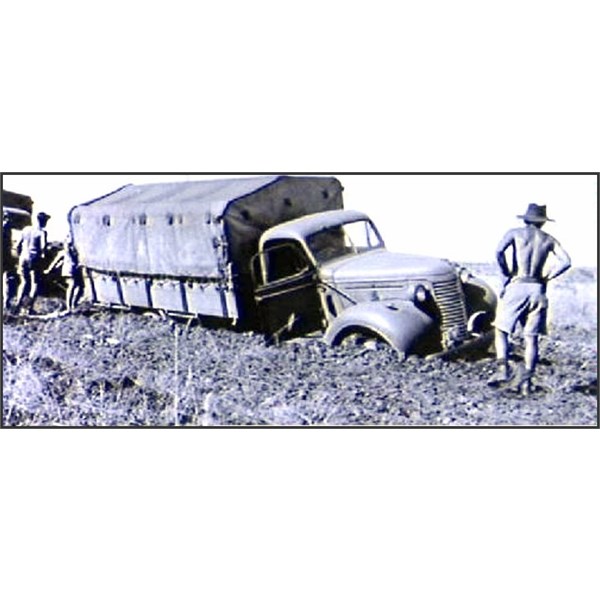
Bogged vehicle near Elliott
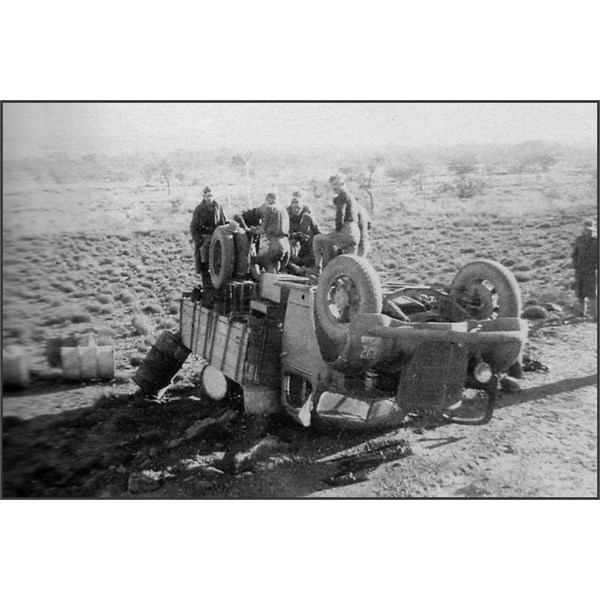
Roll Over
Banka Banka Staging
Camp site is located on Banka Banka Station and is signposted. This was the second night’s stopping place on the four day run from
Alice Springs to
Larrimah.
Clem N Govett, a convoy driver with the Army, describes Banka Banka as ”an oasis in
the desert. Formalities at this point were similar to those at
Barrow Creek and troops lost little time in settling down for the night’s rest...There was little to do except sleep. Pictures were shown once per week but, naturally, it need not necessarily be the same night as your convoy was there. Banka Banka was an important staging
camp along 'the track', providing a night’s accommodation to the many convoys heading north. When sold by the Commonwealth Disposals Commission there were 54 buildings listed, including stores, workshops, sleeping huts and a
bakery.
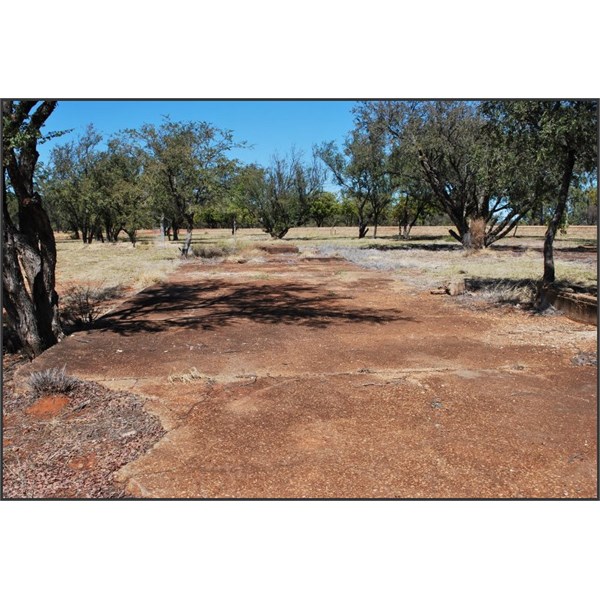
Concrete slab at Elliott Staging Camp
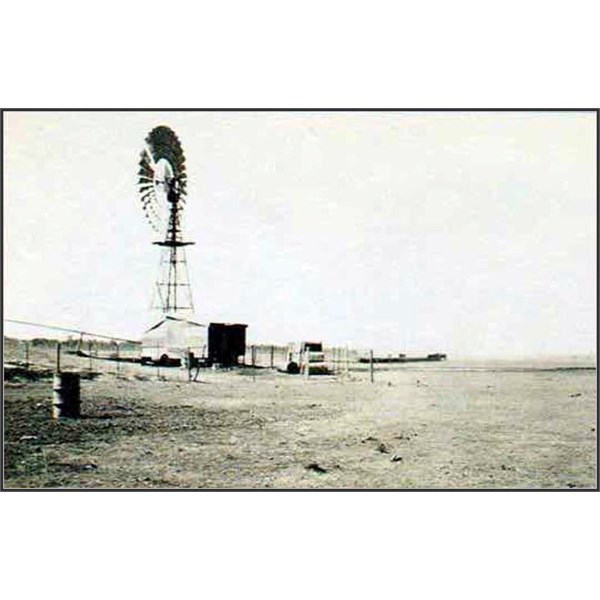
Dam and pump at Elliott
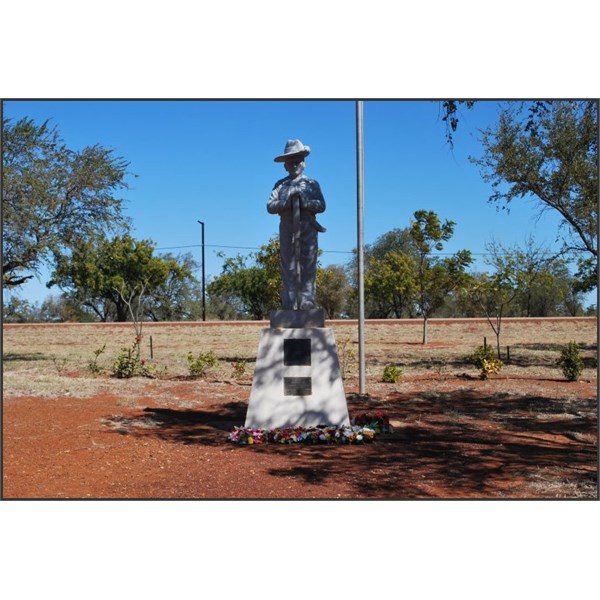
Monument at Elliott Staging Camp
originally known as No8
Bore Newcastle Waters, this town was named after Army Lieutenant 'Snow'
Elliott, who established No 7 Australian Personnel Staging
Camp in the
area. In a census carried out on 7 December 1940, three officers and 81 other ranks were recorded on site.
Elliott was used as a luncheon point only for Northbound convoys on their third day out of
Alice Springs, and travelling between Banka Banka Staging
Camp and
Larrimah. For Southbound convoys it was the first overnight stop from
Larrimah.
The highway virtually ran through the middle of the staging
camp, separating the truck
parking area from the administrative buildings. The
camp had the capacity to shelter 1500 men and, due to the availability of
bore water, contained a vegetable garden. A Field
Bakery company detachment ensured a ready supply of fresh bread.
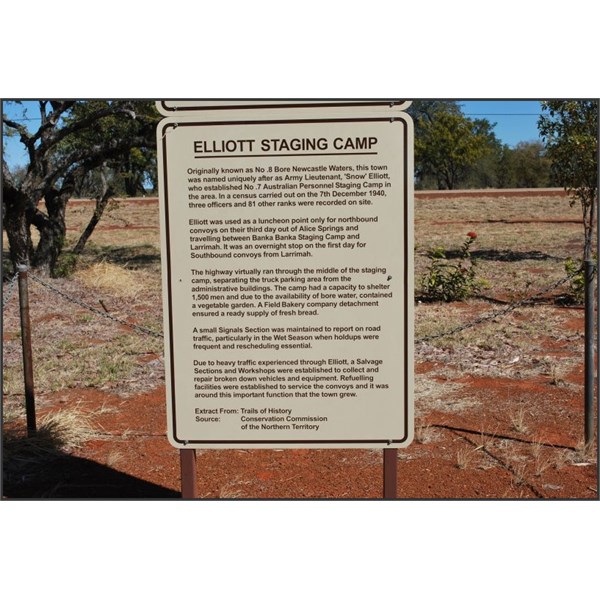
Sign at Elliott Staging Camp
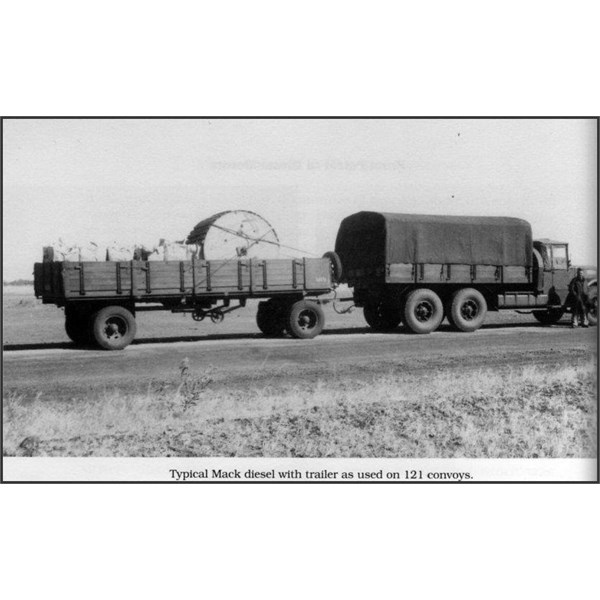
Mack Truck and Trailer
A small Signals Section was maintained to report on road traffic, particularly in the Wet Season when holdups were frequent and rescheduling essential.
Due to the heavy traffic experienced through
Elliott, a Salvage Sections and Workshops were established to collect and repair broken down vehicles and equipment. Refuelling facilities were also established to service the convoys and it was around this important function that the township grew.
The
Daly Waters aerodrome is located west of the Stuart Highway and is accessible Via a signposted track off the road leading to the township. The original hangar, restored by the NT National Trust, contains a display highlighting the aerodrome's history. As a consequence of the worsening situation in the Pacific, the RAAF posted a number of its squadrons to Singapore. Number 1 Squadron, with its Hudson bombers, commenced duty on the island in July 1940,followedby the Wirraways of Nos 8 and 21 Squadrons.
Daly Waters provided these squadrons with refuelling and servicing facilities during their flights to Singapore. With the establishment of
Brisbane and
Townsville as major assembly points for USAAF in November 1941 , DalyWaters later became an important staging point for aircraft transiting to
Darwin and onward to the combat zones.
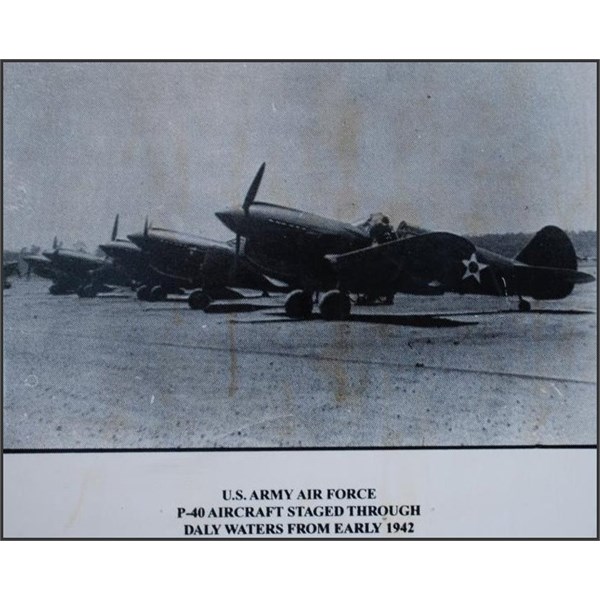
USAAF P-40 Warhawks at Daly Waters
The RAAF arrived at
Daly Waters on 8th February 1942 and set up temporary headquarters at the hotel. Numbers 13 and 2 Squadrons had Hudsons at the aerodrome during the
Darwin
air raids of 19th February 1942, and in the weeks that followed a number of units arrived in the area. The RAAF medical unit, No 1 Medical Receiving Station (MRS), set up a mobile surgical unit and hospital at the hotel on 11th March 1942. Many evacuees from the Netherlands East Indies passed through
Daly Waters on their way south and were thankful for the
services of the medical personnel. It was not uncommon to see up to six aircraft land at
Daly Waters every 15 minutes.
Other units,including No 1 Repairand Salvage Unit (RSU), No 34 Squadron,No 2 Air
Ambulance Unit and the USAAF, arrived and set up at the airfield and nearby Pearce‘s Hotel. The arrival of USAAF's 9th Pursuit Squadron on 16 March 1942 was marred by the death of Lt Albert Spehr who crashed his P-40 Warhawk while attempting a slow roll.
death of Lt Albert Spehr
Two days later the aerodrome became a self-accounting RAAFstation and, during the following months, a stop-over for RAAF and USAAF units and aircraft. DalyWaters became No 56 Operational Base Unit on 15th May 1942. No 1 MRS departed from
Daly Waters to Coomalie near the
Batchelor t/off on 27 August and No 1 RSU vacated the aerodrome and moved to
Manbulloo aerodrome Just West of
Katherine on 10th September.
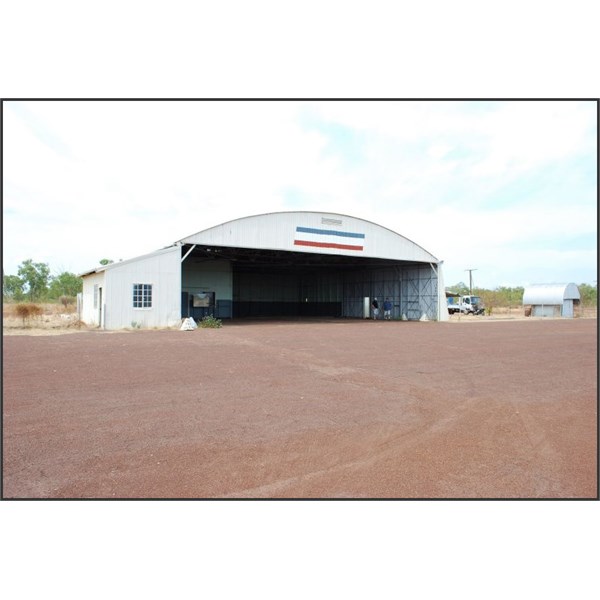
Daly Waters Hangar
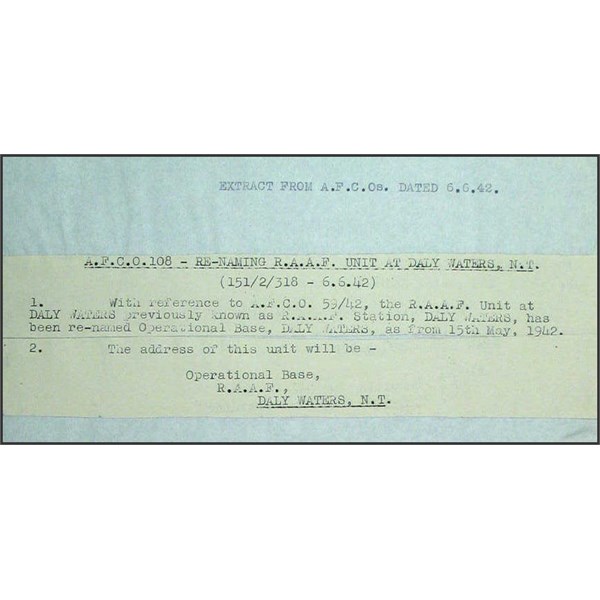
Rename of RAAF Unit at Daly Waters
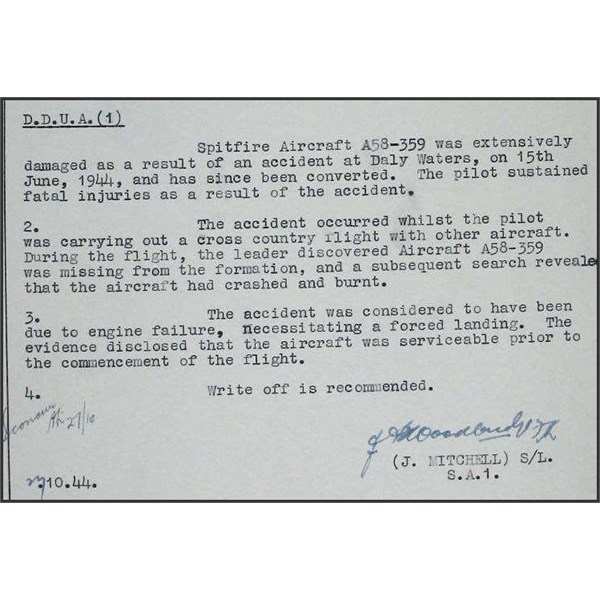
Spitfire A58-359 - Accident to near Daly Waters on 15.6.1944
As the war activity contracted Northwards,
Daly Waters became predominantly a staging airfield for units heading for
Darwin, including the Spitfires of No1 Fighter Wing. Number 56 OBU departed for Gove on 2nd December 1943.
Daly Waters eventually reverted to its pre-war status as a civilian aerodrome with only the occasional forced landing or staging flight involving the complex. The Sidney Williams hangar erected by Larkin's LASCO in 1930 was restored during 1991.
.